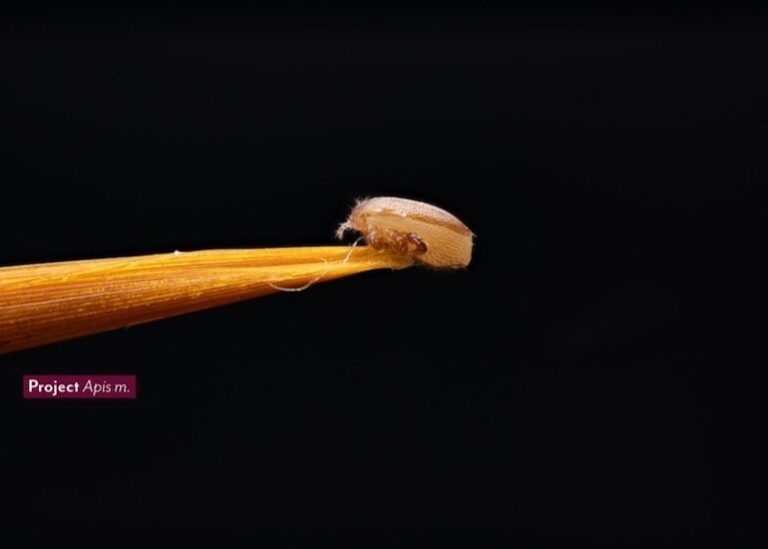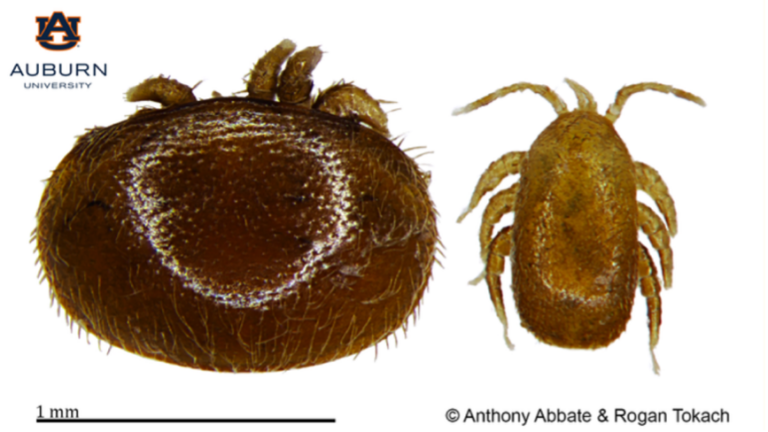 by Véto-pharma
by Véto-pharma Lately, the geographical spread of the parasitic Tropilaelaps mite, originating from Asia, has received increasing attention. While these mites have long been known as parasites of Apis dorsata (the giant honey bee) and Apis laboriosa (the Himalayan giant honey bee), it has been discovered more recently that two of the four known Tropilaelaps species, namely T. clareae and T. mercedesae, can also infest hives of Apis mellifera, the Western honey bee.
Not only can Western honey bees be infested by Tropilaelaps, but it is now clear that this parasite is spreading into global regions it did not previously inhabit. The first confirmed report of T. mercedesae was reported from the Krasnodar region in Western Russia in 20211 and in Georgia in 20242. From there, a spread west and south is regarded as very likely.1
Curious to learn more about Tropilaelaps? Don’t miss our previous article, click here!
While the arrival of Tropilaelaps in Central and Western Europe, and possibly North America is only a question of time, honey bee researchers are trying to find out whether some of the commonly used synthetic miticides against varroa mites (Varroa destructor) could be efficient against the new parasites.
In a recent publication by Gill et al. (2024), the level of resistance of Tropilaelaps mites in Thailand against the four most used synthetic molecules to treat honey bee colonies against varroa mites (Amitraz, Flumethrin, Fluvalinate, Coumaphos) has been investigated.3
The results suggest that resistance was detected in the tested Tropilaelaps populations against three of the four tested miticides, while amitraz was the only molecule that demonstrated a significant potential to reduce Tropilaelaps infestations at 64% efficacy.3


A previous study from Afghanistan, where Tropilaelaps is established as well, found a high potential for control of the parasite with amitraz in 2008.4 Testing a commercially available amitraz strip treatment, this study found a mean efficacy of 96.7% against Tropilaelaps in the five honey bee colonies treated with amitraz – a promising result in the efforts to determine which active ingredients could be utilized to control this parasite.
On the other hand, in 2017, a different study that tested the same amitraz strip application in Northern Thailand found no significant impact of the Tropilaelaps mite population in the tested Apis mellifera colonies.5 It must be noted here that the amitraz treatment was only applied for efficacy testing during the wet season. It was not included in the second field trial which was carried out during the dry season.5
Environmental factors as part of the experimental conditions are not the only potential source for different outcomes in studies investigating the efficacy of active molecules.
In a recent presentation at the ABF (American Beekeeping Federation) conference, Dr. Jeff Pettis presented data from South Korea where the potential of different miticides for Tropilaelaps control was tested.4
One of the tested treatments was a commercial amitraz gel formulation, authorized for treatment against varroa mites in the United States. 45 days after the first application, the percentage of infested cells per 200 brood cells was recorded for each tested acaricide. About 5 cells per 200 were infested in the amitraz-treated group at the end of the experiment, whereas more than 50 / 200 cells were infested in the untreated control group.
The infestation level in amitraz-treated colonies was significantly lower after treatment than that of untreated controls as well as colonies treated with oxalic strips.6
These results indicate that amitraz may be a promising candidate for efficient Tropilaelaps control in the future. However, more comprehensive data collection is necessary, testing different formulations and application forms of amitraz.
 by Véto-pharma
by Véto-pharma  by Véto-pharma
by Véto-pharma Picture credits:
Denis Anderson, CSIRO
Project apis M
Auburn University
References:
Join the Véto-pharma community and receive our quarterly newsletter as well as our occasional beekeeping news. You can unsubscribe at any time if our content does not suit you, and your data will never be transferred to a third party!
© 2019-2025, Véto-pharma. All rights reserved